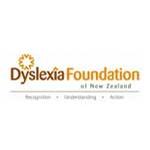
Government Urged To Take Urgent Action To Address Neurodisabilities In Justice System
31 May 2016, 12:27PM
Sothern PR
With Youth Court age proposals currently under consideration, the Government is being urged to seize a historic opportunity to radically improve prospects for young people with neurodisabilities who are vulnerable in the justice system.
Urgent action on the Youth Court age is one of eight key recommendations from the 2016 Neurodisabilities Forum Report. The report, authored by Dr Nessa Lynch, Faculty of Law, Victoria University of Wellington, in conjunction with Dyslexia Foundation of New Zealand (DFNZ), summarises discussions from the Forum held in Wellington earlier this month and attended by more than 60 key stakeholders in the justice, health, education, social development and disability sectors.
Guy Pope-Mayell, DFNZ Chair of Trustees, says the gross over-representation of neurodisabilities in NZ court and prison statistics shows just how vulnerable these individuals are when they come into contact with the justice system.
“In line with UK research*, it is estimated 60-90% of New Zealand youth offenders have communication disorders. UK and New Zealand experience also suggest the vast majority of offenders may also have one or more of a range of neurodisabilities ranging from attention deficit hyperactive disorder, autism, traumatic brain injury and epilepsy through to foetal alcohol syndrome disorder,” he says.
“The shocking reality is that this represents the criminalisation of mental health issues, with our prisons acting as quasi mental health institutions. We really need to connect the dots here – people with neurodisabilities are being shunted into the justice system where, by reason of their neurodisability tendencies, they may be rendered guilty of offences they may not even have committed,” he says.
Pope-Mayell says people with neurodisabilities are highly prone to false or exaggerated confessions due to propensity to say ‘yes’ in order to bring an uncomfortable situation to an end. Lack of eye contact and sensory issues are also common characteristics of neurodisabilities. While this is indicative of anxiety or nervousness in the individual, it can be misinterpreted as guilt, disinterest or belligerence.
“There is no doubt that individuals with neurodisabilities share a range of common tendencies that do not present well in a justice context. It is imperative the Government take urgent action to address this and get these individuals onto a restorative, rehabilitative path. In New Zealand currently, this path is best defined in the Youth Court, which is highly regarded, internationally respected, nuanced and restorative – and acknowledged as world-leading in a pioneering response to the neurodisability issue.”
“We urge that the Government act swiftly to either raise the Youth Court age or introduce an alternate mechanism to refer vulnerable people with neurodisabilities down to Youth Court. This would follow through on recent moves to overhaul Child, Youth & Family to better protect vulnerable children,” Pope-Mayell says.
The full recommendation from the Forum report is that the Government accept the recommendation of the Expert Panel on the Modernisation of CYF that the age of penal majority is raised to 18, and the Panel’s additional recommendation that a mechanism be introduced for 18 and 19 year olds to be referred down to the Youth Court or introduce an alternate ‘refer down’ mechanism by which vulnerable individuals with neurodisabilities can be dealt with in Youth Court.
The Forum report notes that an equally bold and innovative change, if the age of penal majority is not raised, would be to introduce a ‘refer down’ mechanism to allow case-by-case consideration, care and protection for all people with neurodisabilities who are vulnerable in the justice system to be transferred to the Youth Court.
Pope-Mayell says such changes would be in line with recently announced major reforms and a complete overhaul of Child, Youth & Family to improve long-term life outcomes for vulnerable children. These include introduction of a child-centred model and raising the care and protection age to 18.
“In light of this, legal practitioners advise it would be incongruous, impractical and unworkable to have two different ages within the CYPF Act. It would mean that a 17 year old would potentially be in the care of the state as a vulnerable young person, but would be treated by the justice system as being of full capacity,” he says.
Practitioners at the Forum estimated that up to 80% of young people in the Youth Court have at some point been subject to a CYF notification. It is likely that, in many of these cases, family circumstances are underpinned or compounded by neurodisabilities. FASD, for example, can be intergenerational. This is also the case with a range of other neurodisabilities. Co-morbidity is also common. Dyslexia, for example, can be co-morbid with autism, attention deficit hyperactivity disorder (ADHD), dyspraxia, dysgraphia and other disorders.
Other key recommendations from the Forum report include that urgent funding and resourcing be made available for a specific study on the prevalence of neurodisability in the New Zealand justice system; and that front line police and other justice practitioners are equipped with better knowledge as to how neurodisabilities present and how best to manage this. To support this, the Forum report includes a Neurodisability Tendencies Checklist which sets out some of the common characteristics of neurodisabilities and outlines simple steps that can make a big difference in addressing misunderstandings across the points of intersection with the justice system – from first police contact to caregiver engagement, legal representation, the court process and so on.
Copies of the Report and the Neurodisability Checklist are available for download from http://neurodisabilitiesforum.org.nz/
*2012 Children’s Commissioner for England report (“Nobody Made the Connection: The prevalence of neurodisability in young people who offend”, Nathan Hughes et al, October 2012) – highlighting major correlations between learning differences/neurodisabilities and youth offending.
